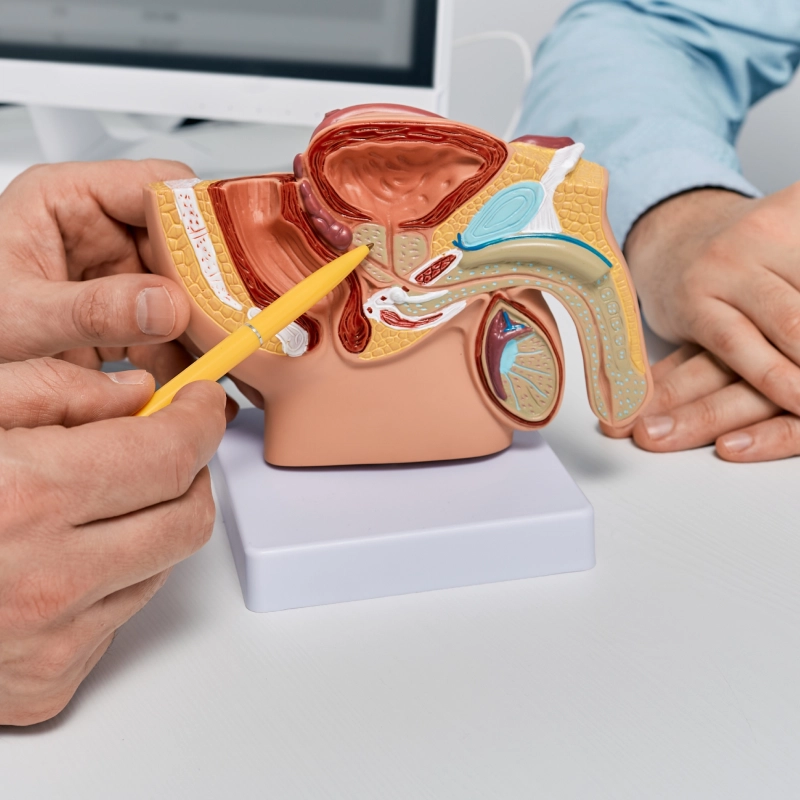
Prostate health is a critical issue for men, especially as they age. Benign Prostatic Hyperplasia (BPH), a non-cancerous enlargement of the prostate gland, affects a significant portion of the male population over the age of 50. This condition can lead to uncomfortable urinary symptoms and, if left untreated, can cause severe complications. Traditional treatments, while effective, often come with significant side effects. Enter the laser: a modern, less invasive solution that is transforming prostate treatment.
Understanding Prostate Health and BPH
The prostate gland, part of the male reproductive system, surrounds the urethra and produces seminal fluid. As men age, hormonal changes can cause the prostate to enlarge, a condition known as BPH. Symptoms of BPH include frequent urination, difficulty starting and stopping urination, weak urine stream, and the feeling of incomplete bladder emptying. While not life-threatening, these symptoms can severely impact quality of life.
Traditional Treatments for BPH
Traditional BPH treatment ranges from medication to surgery. Medications like alpha-blockers and 5-alpha-reductase inhibitors can alleviate symptoms but often come with side effects such as dizziness, sexual dysfunction, and low blood pressure. Surgical options, such as Transurethral Resection of the Prostate (TURP), are more effective but involve significant recovery time and risks like bleeding, infection, and incontinence.
The Advent of Laser Therapy
Laser therapy for BPH offers a minimally invasive alternative to traditional surgical methods. It uses concentrated light energy to remove excess prostate tissue, relieving urinary symptoms with fewer side effects and a quicker recovery. There are several types of laser treatments available:
- Photoselective Vaporization of the Prostate (PVP): Also known as GreenLight laser therapy, PVP uses a high-powered laser to vaporize excess prostate tissue. It's known for its precision and minimal bleeding.
- Holmium Laser Enucleation of the Prostate (HoLEP): This method uses a holmium laser to cut and remove excess prostate tissue. It's particularly effective for larger prostates and has a low retreatment rate. Off late this has become the standard of treatment for BPH
- Thulium Laser Enucleation of the Prostate (ThuLEP): Similar to HoLEP, this technique uses a thulium laser and offers precise tissue removal with minimal bleeding.
Advantages of Laser Therapy
Laser therapy presents numerous advantages over traditional treatments:
- Minimally Invasive: Laser procedures are less invasive than traditional surgery, leading to reduced hospital stays and quicker recovery times.
- Lower Risk of Complications: The precision of lasers minimizes damage to surrounding tissues, reducing the risk of complications such as bleeding and incontinence.
- Effectiveness: Laser treatments are highly effective in relieving BPH symptoms, often with long-lasting results.
- Early discharge and recovery
What to Expect During and After Laser Therapy
The procedure typically involves the following steps:
- Pre-Procedure: Patients may undergo a series of tests, including a physical examination, urine tests, and imaging studies, to determine the size and condition of the prostate.
- Procedure: During the procedure, which usually lasts between 30 to 90 minutes, a laser fiber is inserted through the urethra to reach the prostate. The laser then targets and removes the excess tissue.
- Post-Procedure: Recovery is generally quick, with many patients experiencing immediate relief of symptoms. Most men can return to normal activities within a few days, although strenuous activities should be avoided for a few weeks.
Potential Side Effects and Considerations
While laser therapy is generally safe, some potential side effects include urinary tract infections, temporary difficulty urinating, and chances of mild incontinence which can be temporary. It’s essential to discuss these risks with a healthcare provider to make an informed decision.
Conclusion
The use of lasers in prostate laser therapy marks a significant advancement in medical technology. Offering a less invasive, highly effective alternative to traditional surgical methods, laser therapy is improving the quality of life for many men suffering from BPH. As technology continues to evolve, we can expect even more refined and effective treatments, ensuring better outcomes for patients.

